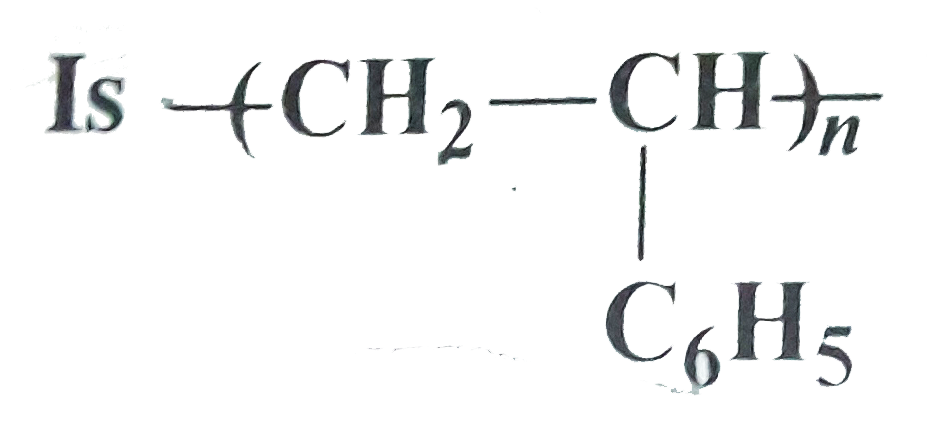(a) 
a homopolymer or a copolymer ?
(b) Is it an addition or condensation polymer ?
Video Solution
Text Solution
(a) The repeating structural unit of the give polyer contains only one type of monomerf unit, i.e., styrene, C6H5CH=CH2 , therefore , it is a homopolyer.
(b) Since the monomer contains a double bond, and the polyer does not , therefore, it is an addition polymer.
|
Updated on:21/07/2023
Topper's Solved these Questions
- BOOK - PRADEEPCHAPTER - POLYMERSEXERCISE - NCERT (Questions and Exercises with Answers) (NCERT INTEXT UNSOLVED QUESTIONS)6videos
POLYMERS
- BOOK - PRADEEPCHAPTER - POLYMERSEXERCISE - NCERT (Questions and Exercises with Answers) (NCERT EXERCISES)20videos
POLYMERS
- BOOK - PRADEEPCHAPTER - POLYMERSEXERCISE - Test Yours Grip (Fill in the blanks)24videos
POLYMERS
- BOOK - PRADEEPCHAPTER - P-BLOCK ELEMENTS EXERCISE - IMPORTANT QUESTIONS FOR BOARD EXAMINATION25videos
P-BLOCK ELEMENTS
- BOOK - PRADEEPCHAPTER - REDOX REACTIONS EXERCISE - Assertion reason type question16videos
REDOX REACTIONS
Similar Questions
Knowledge Check
- Question 1 - Select One
Monomers are simple molecules, which combine with each other to form polymers. Each polymer has a repeating structural unit. Polymers formed the same type of monomers are called homopolymers and if two or more different repeating units (monomers) make up the polymer, it is known as a copolymer. Both homopolymers and copolymers may be formed either by addition or condensation reactions. Alkenes and diense polymerize by addition (chain growth) mechanism involving carbocations, carbanions or free radical intermediates. Diense (Chloroprene, isoprene, etc) polymerize by 1,4-addition mechanism to give cis- or trans- polymers. Natural rubber is, however, cis- polyisoprene. Natural rubber is quite soft and flexible but these properties can be improved by a process called vulcanization. In contrast, bifunctional monomer molecules undergo condensation or step-growth polymerization. Polymers which can be heated and reshaped as many times as desired are called thermoplastics (polythene, polystyrene, PVC teflon, etc.) while those which can be heated only once to give a particular shape are called thermosetting polymers (Bakelite, Melmac, etc).
Which of the following are examples of homopolymers?ASBR, glyptal, nylon-6,6BNylon-6, butyl rubber, styrene rubberCPolyethene, polypropene, PVCDMelmac, bakelite, teflon
Is [−−CH2−CH(C6H5)−−]n a homopolymer or a copolymer? Is it an addition polymer or a condensation polymer?
View SolutionIs [−−CH2−CH(C6H5)−−]n a homopolymer or a copolymer ? It is an addition or a condensation polymer ?
View SolutionCondensation Polymers
View SolutionBuna-S is a homopolymer or copolymer.
View SolutionWhat are homopolymers and copolymers ?
View SolutionAddition polymers || Condensation polymers
View Solution(a) Can a copolyer be formed in both addition and condensation polymerization ? Explain.
(b) Can a homopolymer be formed in both addition and condensation polymerization ? Explain.View Solution


 is a homopolymer or a copolymer?
is a homopolymer or a copolymer? a homopolymer or a copolymer?Is it an addition or a condensation polymer?
a homopolymer or a copolymer?Is it an addition or a condensation polymer?